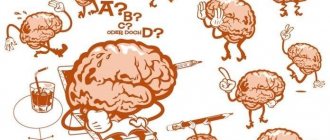Psychological therapy has a variety of techniques and techniques, some of which, when used skillfully, can achieve amazing results. Autogenic training is one of these techniques that involves psychological self-regulation and self-hypnosis. Autogenic training has a certain connection with hypnosis, but differs from it in that the “patient” is not a passive object of influence, but actively practices psychological influence on himself.
Autogenic training: what is it?
Wikipedia defines autogenic training quite abstrusely. It says that autogenic training is “a psychological technique aimed at restoring the dynamic balance of the homeostatic mechanisms of the human body that are disturbed as a result of stress.” It needs to be defined more simply and clearly.
Autogenic training is a technique that achieves control over certain body functions that are initially involuntary. These are, in particular, psychological and mental functions, so autogenic training is often used to relieve internal tension, normalize and improve mood, and overcome psychological problems. At the same time, an important part of autogenic training is muscle relaxation, which is carried out at the first stage.
Autogenic training is a fairly simple method, so it can be mastered by most people. It is believed that the autogenic training technique was developed at the beginning of the twentieth century by Johann Schultz, a German psychiatrist and psychotherapist. In the early stages of his scientific career, he conducted hypnosis sessions and then developed a more advanced system in which the patient was given a more active role. Schultz is a fairly prominent scientist of his time, one of those specialists who integrated psychotherapy into medical practice, and generally made psychology a full-fledged science. Of course, Schultz’s personality also had its dark side: he was one of the Nazi ideologists and tried to interpret racial and mental “inferiority” from a medical perspective. In Nazi Germany, Schultz organized mass persecution of homosexuals, and also tried to “cure” them using savage methods; those who could not be “cured” were sent to a concentration camp by Schultz. Nevertheless, the autogenic training method outlined by Schultz is widely used today throughout the world.
However, Schultz did not develop his system from scratch. First, he examined the work of contemporary psychotherapists such as Sigmund Freud and Oskar Vogt. Secondly, methods of relaxation, breathing exercises and meditation underlie the most ancient spiritual practices, of which the most famous are the eastern ones - yoga, qigong, although something similar was practiced in Christian and Muslim faiths.
INTRODUCTION
Throughout the history of medicine, including modern times, the idea that disease is the result primarily of external influences has been ingrained in the thinking of patients and doctors. This approach took little into account those internal factors that determine the characteristics of mental, nervous and humoral regulation, that is, in a broad sense, the reactivity of the body. But the future successes of medicine, undoubtedly, are associated not only with new drugs and advanced medical equipment. They largely depend on our ability to manage internal regulatory and protective processes and mechanisms. In this regard, we can support the opinion of V.P. Petlenko (1983) that the theory of medicine of the future is a theory of internal mechanisms of adaptive response and management of these processes.
At present, there is no longer any doubt that many physiological functions are subject to pronounced psychogenic influence. For some people this influence is greater, for others less; Some psychological correlates have been identified that suggest the presence of genetic and morphological prerequisites for various types of psychophysiological reactivity with a certain role of the social factor. Unfortunately, we have to admit that the mechanisms of psychogenic influence have so far been poorly studied and ideas about them are still largely hypothetical.
In neurophysiology and neuropsychology, the reality of central, including mental (conscious), control of peripheral sensory information is well known. However, the internal, intimate neuropsychological mechanisms of this control and the finest regulation of functions in the feedback system are still problems that have been partially solved theoretically, but have been little studied practically. This fully applies to psychotherapy, the mechanisms of which, as L. Chertok (1982) rightly notes, in general have still been very little studied. Autogenic training is no exception. Indeed, dozens of methods of psychotherapy are currently known, a narrower list of established and hypothesized factors determining their therapeutic effect, but the very essence of this action still remains largely hypothetical, which creates significant difficulties that arise when comparing different forms and methods of psychotherapy. In this case, what is the reason for the wide and ever-increasing popularity of autogenic training?
What is attractive about it, first of all, is the simplicity of treatment techniques, combined in many cases with the pronounced effectiveness of psychotherapeutic effects that contribute to the normalization of higher nervous activity and the correction of deviations in the neuro-emotional and vegetative-vascular sphere, the involvement of the patient’s personality in the treatment process and the educational, training nature therapy. All this distinguishes autogenic training from other methods of psychotherapy and makes the method accessible to a wide range of doctors. However, it would be a deep mistake to confuse the concepts of “simplicity” of therapeutic techniques and “simplification”. Unfortunately, such a confusion of concepts and such an attitude towards autogenic training sometimes still occurs, leading to vulgarization and discrediting of the method. In some cases, the technique of autogenic training is “simplified” to autosuggestion and even orthodox cueism, while often being inferior to the latter in the skill of execution.
The self-regulation of emotional and vegetative functions achieved through autogenic training, optimization of states of rest and activity, increasing the ability to realize the psychophysiological reserves of the body and personality allow the method to be used not only in clinical practice, but also in the field of aviation and space medicine, general and military pedagogy, and in training athletes, training and professional adaptation of camera specialists, whose activities are associated with exposure to extreme factors of work and living environment, modeling of various human conditions, including in stage acting, as well as in a number of other professions. Currently, problems of biocurrent control and adaptive behavior closely related to autogenic training are allocated to a special branch of medicine. However, the main thing is the preventive, psychohygienic and psychotherapeutic use of autogenic training. The generally accepted opposition between “functional” and “organic” is very arbitrary; the differences between them are largely quantitative, and the stages of organic changes, with the exception of acute traumatic injuries, are always preceded by functional ones. The main difference is that at the present stage of development of medical science, only the stage of functional changes can be considered as completely reversible. This is what determines the increased interest of specialists in methods of prenosological functional diagnostics observed in recent years. Functional diagnostics, in turn, poses the problem of functional therapy.
The attitude towards autogenic training as some kind of illegitimate offspring of hypnosis is not uncommon. In this regard, both the commonality that connects these two methods of psychotherapeutic influence, and what underlies their deep differences, will be discussed in detail below. Another widespread misconception assigns autogenic training the role of a sedative, the destiny of which is a general sedative effect. Apparently, it would be advisable to note that currently there are a number of modifications and methods of autogenic training aimed at psychophysiological activation, stimulating neuro-emotional stress in order to achieve an optimal state corresponding to a particular activity. At the same time, a “volley”, short-term mobilization of the body’s psychophysiological reserves can be accurately calculated in time. This modification of special autogenic training exercises is currently actively used in elite sports, contributing to the outstanding achievements of top-class athletes, as well as in some other special types of human activity.
The special place of autogenic training among other methods of psychotherapy is also determined by the fact that the person using it is actively involved in psychotherapeutic work while fully maintaining initiative and self-control. It is also important to take into account the fact that acquired self-interaction skills with periodic maintenance courses are maintained throughout life. The active nature of autogenic training distinguishes the method favorably from hypnotherapy, in which the patient acts as a passive object of influence, and the therapeutic effect is often accompanied by a feeling of dependence on the doctor and the need for repeated courses.
The defining and basic element of autogenic training is trained muscle relaxation, against the background of which specific techniques of autodidactics and autosuggestion are implemented. Unfortunately, we still know very little about the mechanisms of verbal auto- and hetero-influence. Psychiatry, psychology, neuropsychology and a new promising field of science - psycholinguistics - have not yet answered numerous questions in this regard.
It is known that, according to the definition of K. Marx1, “Language
is the immediate reality of thought." At the same time, some modern research shows that the laws of the functioning of language and thinking are somewhat different. Apparently, it should be recognized that another famous expression of K. Marx does not lose its relevance: “Just as philosophers isolated thinking into an independent force, so they should have isolated language into some independent, special kingdom” (ibid., p. 448). Psychotherapy without language is hardly possible, and new systematic research in this area would be useful in both an applied and a general scientific sense. The use of autogenic training in clinical practice has been steadily expanding in recent years, especially in the treatment of neuroses and borderline conditions, during the period of convalescence in asthenized patients, for the purpose of preoperative preparation, as a psychophysiological method in the rehabilitation system of patients and for the treatment of functional disorders in a number of other cases.
The success of certain treatment methods depends on many reasons. During psychotherapeutic influence, the factors of interpersonal interaction between the doctor and the patient, often for some reason called “nonspecific,” acquire particular importance. The ability to win over a patient, human warmth, sincere sympathy and empathy are, without a doubt, specific factors on which, along with impeccable mastery of the technique of therapeutic techniques and the ability to creatively (individually) apply them in specific patients, primarily depends therapeutic success.
Any method of psychotherapy always includes two components: an intellectual component (using Pavlovian terminology - a secondary signal), associated with the informational impact of a word, and an emotional one, the content of which is a mass of factors perceived as a primary signal - facial expression, timbre and intonation of the voice, the nature and characteristics of gestures. Already infants perceive their deep, also informational, meaning - attitude.
Without the emergence of a specific connection between the doctor and the patient, without empathy on the part of the first and sympathy of the second, the effectiveness of psychotherapy, as a rule, is very insignificant.
Many years of clinical experience and long-term observations of healthy people make it possible, with some convention, to distinguish two main types of response to emotionally significant stimuli: psychosomatic, in which the “response” is carried out mainly in the internal sphere, and social, when the discharge of emotional situations is, as a rule, directed externally. . The first type is more socially acceptable, but less “convenient”, since it is often accompanied by overstrain of psychophysiological processes that ensure the reliable functioning of the regulatory mechanisms of the body and personality.
Training these mechanisms, increasing the capabilities of voluntary control and correcting emerging deviations constitute the main goal and essence of psychotherapeutic techniques and mechanisms of autogenic training.
It is fairly well known that a significant correlate of negative emotions is muscle tension. It is also known that the so-called transitional states of consciousness are associated with or accompanied by relaxation. Using feedback mechanisms, which will be discussed in more detail below, autogenic training, the basic element of which is muscle relaxation, helps reduce the role of the somatic component of negative emotional experiences. Through a specific effect on integrative cortical processes, it leads to the restoration of internal balance, and with long-term use of the method, it transfers the regulation of mental and somatic functions to a qualitatively new level, ensuring an optimal and rational response.
The adaptive nature of the psychotherapeutic effect is the most significant difference between autogenic training and other psychotherapeutic techniques. In recent years, autogenic training has been successfully used not only for the treatment of neuroses and neurosis-like conditions, but also for angina pectoris, psychophysiological rehabilitation of post-infarction patients, vegetative-vascular dystonias, the initial stages of hypertension, bronchial asthma, peptic ulcers, neurodermatitis and many other diseases.
Autogenic training as an independent method was proposed by I. Schultz in 1932. Since the 50s, interest in the method and the number of scientific and popular publications on autogenic training have been steadily increasing. Suffice it to say that the monograph by I. Schultz was reprinted 13 times. Currently, millions of people in different countries of the world successfully use this method. According to our data, in the early 60s, autogenic training in Leningrad was used only in two medical institutions - the psychoneurological dispensary of the Leninsky and Kirovsky districts (G.S. Belyaev, A.A. Mazhbits) and at the Psychoneurological Institute named after. V. M. Bekhtereva (S. S. Liebig). The number of patients who used the method during this period did not exceed 150 - 200 people per year. By the time our first manual for doctors was published [Lobzin V.S., Kulagin Yu.M., 1968], autogenic training was already used in nine medical institutions in the city, in more than 2000 patients annually.
The IV All-Union Congress of Neuropathologists and Psychiatrists (1963) recommended autogenic training for inclusion in complex psychotherapy. In December 1967, a symposium on autogenic training was held in Leningrad, which showed that the method had already won citizenship rights and was widely used in a number of clinics in the Soviet Union (I. Z. Velvovsky, A. L. Groysman, K. I. Mirovsky, I. M. Perekrestov - in Kharkov; M. S. Lebedinsky, V. E. Rozhnov - in Moscow; A. G. Panov and co-workers - in Leningrad; Ya. R. Gasul - in Zaporozhye; N. V. Ivanov - in Gorky; A.S. Romen - in Karaganda, etc.). A meeting of the Leningrad Society of Neuropathologists and Psychiatrists, held in September 1970, dedicated to the problems of autogenic training, showed that not only the method of psychotherapeutic influence was being actively developed, but also the issues of studying and substantiating the psychophysiological mechanisms of the method; A number of reports analyzed the results and prospects for the clinical and psychohygienic use of autogenic training. Currently, autogenic training is used everywhere, and both the “geography” of the method and the areas of its application are steadily expanding. It is possible to distinguish, apparently, two significant areas of application of the method - clinical and psychohygienic.
Over the past years, significant clinical material has been accumulated on the effectiveness of autogenic training for various diseases. According to the general opinion of experts, autogenic training is most effective in the treatment of neuroses, functional disorders and diseases associated with impaired corticovisceral regulation. Numerous studies and application of the method in clinical practice, in particular, have shown that autogenic training helps reduce neuro-emotional tension, feelings of anxiety and discomfort, and has a normalizing effect on the state of basic physiological functions and the regulation of metabolic processes in the body. Under the influence of autogenic training, mood improves, sleep normalizes, the level of functioning and voluntary regulation of various body systems increases, the patient’s personality is activated, and other treatment methods are implemented more productively.
Currently, there are several dozen different modifications of autogenic training, the differences of which are usually associated with the characteristics of those nosological forms or the specific activities of specialists for which they were developed. Several methodological recommendations, manuals, short guides, and popular publications on autogenic training have been published in our country. A description of some of its techniques is given in almost all the latest publications on psychotherapy, psychoneurology, sexopathology and psychology [Slobodyanik A.P., 1978; Rozhnov V. E., 1979; Karvasarsky B.D., 1980; Svyadosch A. M., 1982; Snezhnevsky A.V., 1983; Vasilchenko G. S., 1983, etc.]. However, taking into account the specifics and features of the mentioned publications, their authors did not always have the opportunity to sufficiently fully and comprehensively present the mechanisms of action, methodology, technique and features of the clinical and psychohygienic use of autogenic training. At the same time, as indicated, it should be recognized that in the domestic literature there is not yet a systematic guide to autogenic training that would allow a practicing physician, occupational hygienist or psychologist to study the method and choose the optimal option for its use depending on the clinical or preventive problems being solved .
This publication consistently outlines the history and sources of autogenic training and analyzes related techniques. From the standpoint of domestic neurophysiology and the theory of functional systems by P.K. Anokhin, the book highlights the psychological and physiological foundations and mechanisms of self-regulation, describes in detail its own methodology and features of the training course, the technique of individual and group classes, and for the first time outlines a number of original techniques and exercises developed by the authors.
In conclusion, we note that the materials in the manual are based on more than 20 years of experience in the use of autogenic training in psychiatric and neurological clinics, as well as for the purposes of mental hygiene in healthy people.
Basic poses for training
Autogenic training is divided into two levels - lower and higher
:
- At the lowest level, classes are conducted in one of three poses: lying down, reclining, and “coachman” pose. The key here is relaxation.
- At the highest level, visualization is practiced, similar to real hypnosis, and the posture here is not so important; however, basically the same poses are used as in the lower stage.
Benefits for children with problem behavior
Another area of application is behavioral problems and psychosomatic complaints in children and adolescents.
Here, the authors of a study from the University Hospital and Outpatient Clinic for Child and Adolescent Psychiatry/Psychotherapy in Ulm, Germany, conclude: “Autogenic training is an effective and cost-effective broad-spectrum method for reducing behavioral problems in children and adolescents.” However, the researchers also note that further research is needed to obtain more precise information about the effectiveness of the relaxation technique.
Of course, exercise can benefit children and adolescents who do not have behavioral problems. Relaxation techniques help you, for example, improve performance and concentration, reduce test anxiety and reduce aggression.
Exercises for autogenic training
Autogenic training is a set of formulas for self-hypnosis that must be repeated when performing a particular exercise.
Six standard formulas developed
:
- Feeling of heaviness
. It is necessary to take one of the starting positions listed above and mentally say: “I am completely calm.” After this, slowly, in a state of absolute calm, mentally say several times: “My right hand is very heavy” (for left-handed people the left hand will be). After this, mentally say again: “I am completely calm.” The “heavy hand” formula is mentally spoken out during exhalation; you can imagine that there is actually something heavy on your hand or that it is filled with some kind of heavy liquid. Relaxing the muscles of this arm will feel like real heaviness. To control the sensations, you can slightly raise your hand several times to make sure that “heaviness” appears.
Subsequently, a feeling of heaviness is caused in the other arm, in both arms, in the legs, in the arms and legs, and finally in the whole body. The purpose of the exercise is to develop the ability to easily and quickly create a feeling of heaviness throughout the body. After this, move on to another exercise.
- Feeling warm
. At first they cause a feeling of heaviness throughout the body. Then you need, as in the first exercise, to calmly say several times while exhaling: “My right hand is warm,” and then, “I am completely calm.” As in the first exercise, you should gradually learn to evoke a feeling of warmth throughout the body. You can use figurative representations - for example, how a hand is immersed in a warm liquid. Once the exercise is completely mastered, you can move on to the third.
- Mastering Heart Rate
. For this exercise, you need to learn to mentally count your heartbeats (pulse). First, this exercise is performed in a supine position, with the right hand placed in the area of the heart or radial artery. To prevent your arm from straining, you need to place something under your elbow - for example, a pillow. Having positioned yourself in this way, you must first create a feeling of heaviness and warmth throughout the body.
Then you need to mentally repeat several times: “The heart beats calmly and evenly,” and then - “I am completely calm.” At the same time, you should not concentrate on the work of the heart; you must remain absolutely calm.
An exercise is considered fully mastered when the ability to change the rhythm of your heart to one degree or another appears.
- Regulation of breathing rhythm
. To do this, first evoke feelings of heaviness, warmth and a calm beating of the heart, and then mentally say several times: “I am breathing completely calmly,” after which also mentally – “I am completely calm.” This exercise is perhaps the simplest, so you can quickly master it.
- Feeling of warmth in the abdominal cavity and solar plexus area
. This is the most difficult exercise of the entire complex. But also one of the most important. After all, the solar plexus is a kind of “abdominal brain”; it regulates the activity of many internal organs and, in particular, controls our well-being and mood.
First, you need to evoke feelings of heaviness, warmth, even heart rate and even breathing. Then you need to mentally repeat several times: “My solar plexus radiates warmth” or “My stomach is warmed with pleasant warmth,” and then “I am completely calm.” Your attention should be focused on the solar plexus area. It is located in the abdomen, in the middle between the navel and the end of the sternum. You can, as in previous cases, evoke figurative ideas - for example, think that there is something warm in the solar plexus area.
- Coolness in the forehead
. After evoking all the previous sensations, you need to mentally say several times: “My forehead is pleasantly cool” and once - “I am completely calm.” Attention should be concentrated in the area of the forehead and temples. The exercise is considered quite difficult to master. You can also use figurative representations here.
When these six exercises are sufficiently mastered, long self-hypnosis formulas can be replaced with shorter ones, for example: “Calm ...”, “Heaviness ...”, etc.
When performing exercises, it is necessary to concentrate attention on certain areas of the body, but the concentration should be very calm, “passive”. Exercise should be enjoyable, not tedious.
Each new exercise is mastered within two weeks, two or three times a day. It turns out that 12 weeks (about three months) are allotted for mastering the entire complex. It also turns out that the very first exercise is performed for all twelve weeks, the second for three weeks, and the sixth for only two weeks. The duration of each workout is at least two minutes.
The six exercises listed above constitute the lowest level of autogenic training. The highest level consists of meditation exercises, during which one becomes able to evoke vivid visual images and even immerse oneself in a state of “nirvana.” Such exercises are quite difficult for beginners, should be performed only after a long mastery of the lower level and therefore have not found wide application.
Low-level exercises put the brain in a state of reduced activity. An electroencephalogram of the trainee's brain shows that his state is in an intermediate stage between wakefulness and sleep. This state in itself is close to what is observed during the first stage of hypnotic sleep.
Method of exiting the autogenic state
In a broad sense, an autogenic state is a natural state of relaxation, thoughtfulness, and contemplation. It occurs when a person is in a quiet place, concentrating on something, and in other similar situations. In such an environment, it is necessary to conduct autogenic training.
When returning to an active life, you should adhere to certain rules that will allow you to quickly be “in the right condition”
:
- It is necessary to stop performing the current task and concentrate on the fact that you are well rested and will soon leave the autogenic state.
- You need, without changing your general posture, to slowly clench your hands into a fist and feel the strength throughout your body.
- Without unclenching your fists, you should extend your arms towards your knees.
- Wait until the end of the exhalation and on the next inhalation, raise your arms and face up, arch your back.
- Wait a second or two, then exhale sharply through your mouth, unclench your fists, and open your eyes. After this, you can calmly give up.
If a person has high blood pressure, then when leaving the autogenic state, he should concentrate on the calm, pacifying energy received during the session. If blood pressure is low, then you should concentrate on strength and vigor.
It is important that all steps to exit the autogenic state are carried out correctly. Exiting the exit incorrectly will lead to the opposite result compared to the expected one: the state will be broken, lethargic, and fatigue will be felt for a long time.
Why do you need auto-training?
Regular auto-training sessions establish a normal heart rhythm, lower cholesterol and blood sugar levels, and promote a feeling of lightness in the body. It is useful to use for treatment, relief of symptoms and prevention:
- anxiety
and depressive disorders; - chronic pain (among cancer patients, a beneficial effect of auto-training on pain reduction was revealed);
- sleep disorders;
- high blood pressure (caused precisely by stress, and not by serious physiological or somatic disorders);
- irritable bowel syndrome;
- chronic fatigue syndrome.
Stages of the autogenic state
The autogenic state is a special type of consciousness and a special form of activity. In this case, consciousness is directed from the external world to the internal. To achieve an autogenic state, it is necessary to sit in a suitable environment: a quiet place, the absence of irritating factors, a relaxed posture, passive concentration of attention, in which there is no desire to achieve a specific result.
The autogenic state can be presented in two stages
:
- During the passive stage,
relaxation, calmness, and indifference to the outside world increase, the thought process slows down, while awareness of what is happening around remains. - During the active stage,
awareness increases. The person doing the training gains a heightened sense of what is happening to him. In this case, logical thinking stops, the person does not realize what is happening in the external world, completely immersing himself in the inner world. There may be vivid experiences, such as visual images, sudden clear thoughts, a feeling of inner freedom and relaxedness.
What can you do with Autotraining?
We will use this technique for another very important purpose; to change negative attitudes. Read what negative attitudes are here.
Below I give you a simplified and shortened description of the technique.
Here's what you can do after mastering AT:
- Calm down, effectively relieve physical and mental stress. This is of great importance for the prevention of fatigue, neuroses and psychosomatic diseases.
- Take a quick rest. Restoring strength in an autogenic state is much faster than during sleep, simply lying down, watching TV or listening to music.
- Independently regulate body functions such as blood circulation, heart rate and breathing, blood supply to the brain, which is very important for the treatment of psychosomatic diseases.
- Fight the pain.
- Activate mental and physical functions, for example, attention, memory, imagination, ability to exercise.
- Activate creative resources through the development of intuition and imaginative thinking.
- Defeat bad habits by rationally combating stress, emotional and intellectual activation.
- Know yourself deeply. Ancient sages and doctors considered deep self-knowledge to be a condition for health and personal development.
Autogenic meditation: the highest level of training
It is clear that the possibilities of autogenic training go far beyond the usual normalization of mental state and calm. This, one might say, is a special type of “yoga” that can even cure quite serious diseases - at least those that are of a psychosomatic nature. Various sources say that masters of “spiritual practices” acquired downright supernatural abilities over time. One can argue about how reliable such evidence is, but control over one’s own mental processes is definitely guaranteed. Of course, to achieve the highest meditative state it is necessary to train for more than a month or even a year, although there are cases when a person reaches the highest stage quickly and spontaneously.
Lower level exercises are aimed mainly at controlling the vegetative functions of the body. The highest level exercises developed by Schultz are necessary in order to learn how to evoke complex experiences, vivid visual images, achieve “autogenic neutralization” and catharsis - the highest spiritual purification. Using this technique, Schultz proposed to cure neurotic conditions. Of course, the possibilities of higher training are much wider.
Schultz considered the exercises of the lower level to be only a preparatory measure for the practice of the highest level, which he largely borrowed from Indian yogis. “Higher” exercises, according to Schultz, can only begin to be mastered when the “lower” exercises are fully mastered and all the necessary states are achieved in a maximum of thirty seconds. It is believed that the preparatory stage should last at least eight months. However, the practitioner begins to experience the first visual phenomena already when performing “lower” exercises - of course, not immediately.
An important skill for a practitioner is to learn to achieve the desired states during “lower” exercises in any environment, even in the presence of irritating factors.
Without this, you should not move to the highest stage.
:
- One of the first exercises
of the “higher” cycle is the recording of spontaneous color ideas. It is necessary to keep in mind the idea of a certain color that arose at the moment. After a few weeks of such training, the ability to first “see” randomly running colors appears, and then, among all this chaos, one color begins to dominate. - Another exercise
is to evoke in the mind certain ideas associated with a particular color. For example, golden, yellow, red evoke a feeling of warmth, blue - cold, black and dark purple - oppression and anxiety. - The third exercise
is calling specific objects into consciousness. At first these will be spontaneous images, and then - given objects. Schultz wrote that few people can achieve the ability to evoke clear images of objects; most imagine them only in a general form or in individual details. At the end of mastering the third exercise, the practitioner can “see” himself. - The fourth exercise
trains the ability to evoke images of abstract concepts such as “truth”, “justice”, “happiness” and others. These images may be specific objects, but they will always be strictly individual. Through these images, according to Schultz, the human subconscious expresses itself. - During the fifth exercise,
the trainee learns to imagine himself in certain situations. These images also arise spontaneously at first, and then purposefully. - During the sixth exercise,
the trainee learns to evoke images of other people. At first these are abstract human images and images of people who are indifferent to the trainee. Then people are called in who have some kind of relationship with the trainee and are either sympathetic or unpleasant to him. The second type of images is much more difficult to master, while the distinctive features of people are exaggerated, which is why, for example, unpleasant people appear in a somewhat caricatured form. Gradually, the images become more “calm”, the caricature features are neutralized, and the trainee becomes indifferent to these people. - The seventh exercise
is the final and most important. At this stage, the trainee asks himself important questions - “Who am I?”, “What do I want?” and others, and the subconscious gives the answer - in the form of a stream of images, during which you can see yourself as if from the outside. At this moment, that same spiritual cleansing occurs - catharsis, “autogenic neutralization” occurs, during which the trainee is healed.
It is curious that Schulz considered the exercises of the highest level to be the most important and basic in the entire complex, but they did not find wide application or great popularity; on the other hand, exercises of the lower level, to which Schultz did not attach much value and considered them only preparation for the main exercises, received mass recognition.
Contraindications for autogenic training
Autogenic training, therefore, is a powerful means of mental healing, normalization of mental life, and achievement of absolute inner harmony. However, this does not mean that literally everyone can engage in such practice. Autogenic training is contraindicated for people suffering from acute vegetative crises, panic attacks, having a state of unclear consciousness, or suffering from delirium.
Despite its focus on curing nervous and mental disorders, autogenic training has not shown any particular positive results in the treatment of hypochondriacal syndromes, hysteria, and psychasthenia. Obsessive-compulsive disorder is also not curable using this method.
It is curious that autogenic training successfully eliminates diseases that seem not to be associated with higher nervous activity: constipation, angina pectoris, digestive disorders, even stomach ulcers. This is due to the fact that the autonomic nervous system also regulates the work of these internal organs, and conscious control can be gained over this.
Certain restrictions exist for people who are poorly prepared for such mental tests. For example, particularly impressionable people may not perform some of the exercises, which are labor-intensive and intensely emotional.











